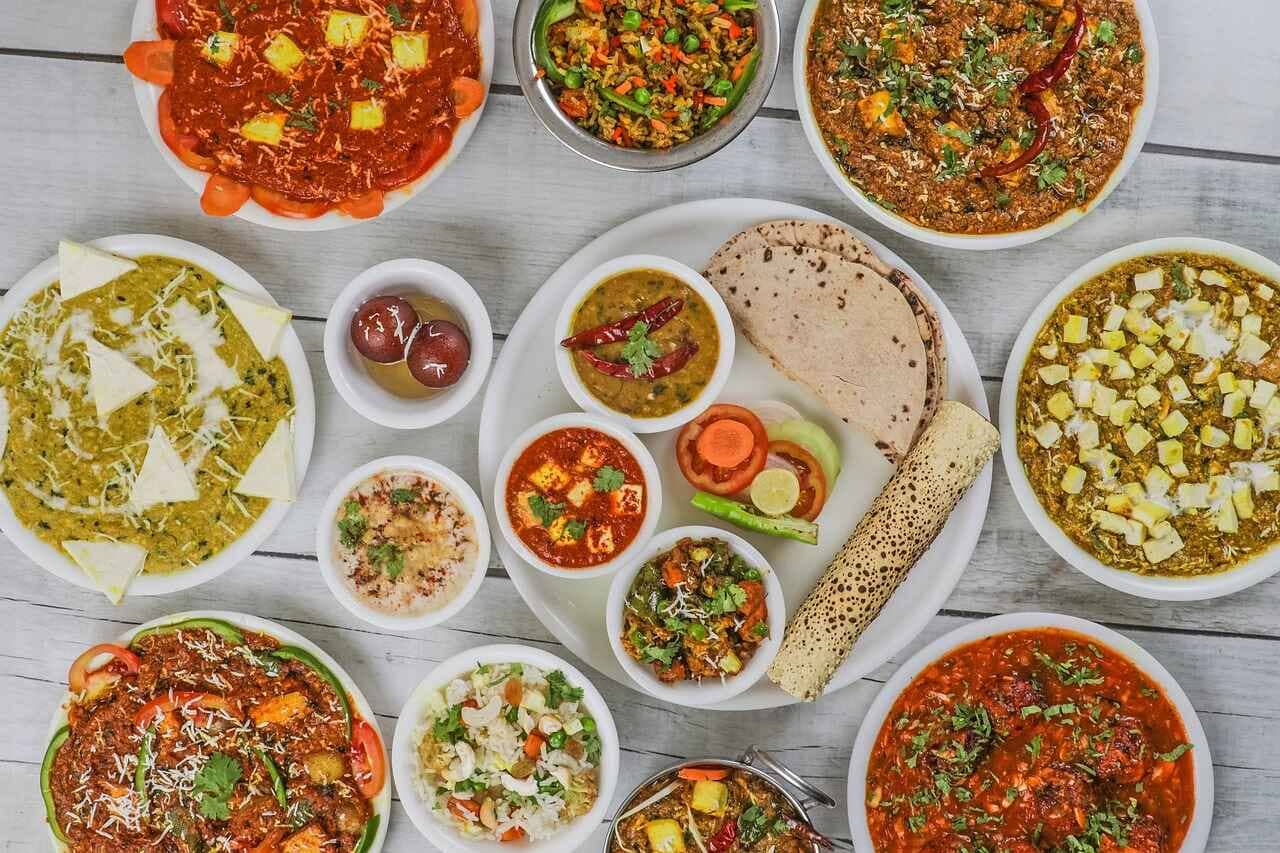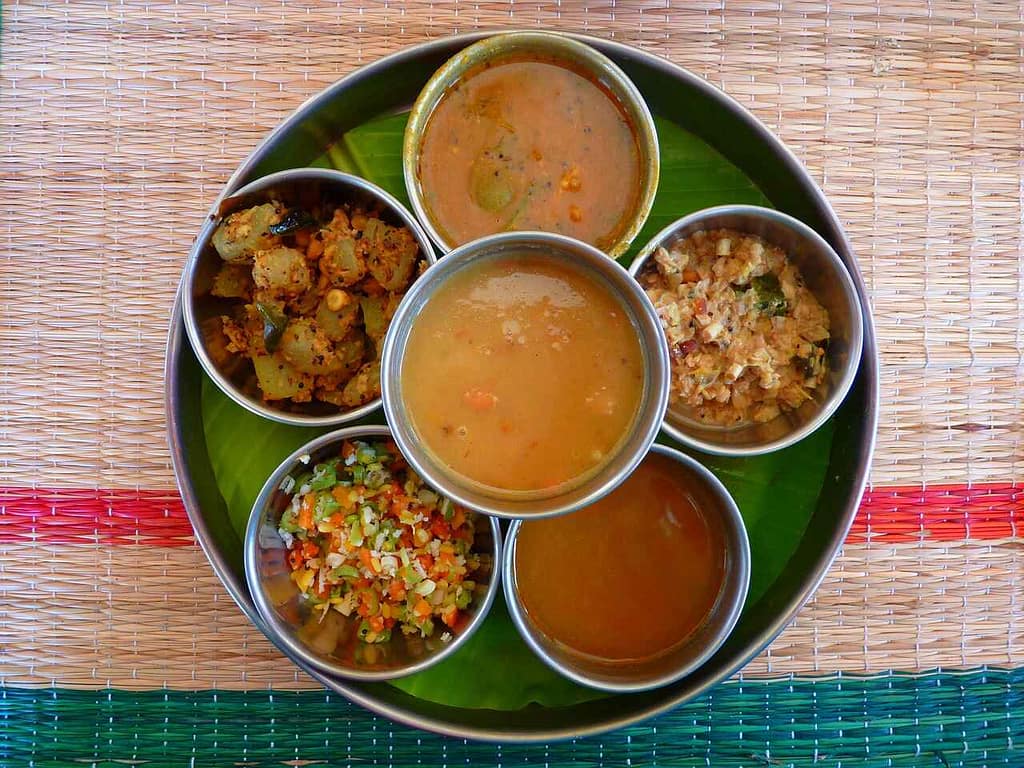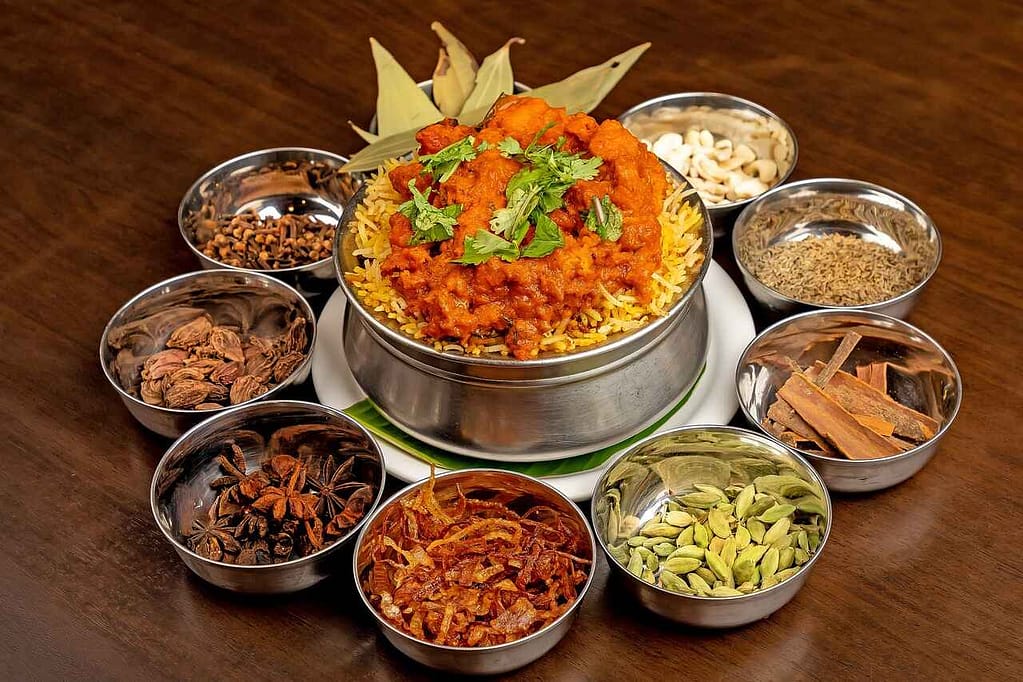Is eating Indian food healthy?
Indian cuisine is a vibrant tapestry of flavors, textures, and aromas that has captivated palates worldwide. From the fiery heat of well-spiced curries to the comforting richness of creamy lentil dishes, Indian food offers a culinary adventure like no other. Its popularity transcends borders, tantalizing taste buds in bustling metropolises and quiet villages alike.
What makes Indian cuisine truly special is not just its delicious dishes but also the diverse range of ingredients and cooking techniques that come together to create a symphony of flavors. Each region of India boasts its own unique culinary traditions, deeply rooted in history and culture, from the lush valleys of Kashmir to the sun-kissed shores of Kerala.
Food in India isn’t just about sustenance; it holds profound cultural significance. It’s a means of celebration, a gesture of hospitality, and a thread that weaves communities together. Every dish tells a story, reflecting centuries of tradition and innovation passed down through generations.
In this article, we’ll explore the question: Is eating Indian food healthy? We’ll delve into the nutritional benefits, potential concerns, and cultural nuances of Indian cuisine, shedding light on its role in promoting both physical well-being and cultural appreciation. Join us on a journey through the tantalizing world of Indian flavors, where health meets heritage in every bite.
Historical Context
Indian cuisine is a product of centuries of rich history and cultural diversity. Its culinary evolution has been influenced by a multitude of factors, ranging from geographical variations to trade routes and religious beliefs.
Spices and herbs hold a central place in Indian cooking, dating back to ancient times. These flavorful ingredients not only added taste but also served medicinal purposes and acted as natural preservatives. The trade routes connecting India with other regions facilitated the exchange of spices, enriching Indian cuisine with a wide array of flavors.
India’s cultural and religious tapestry further shaped its culinary traditions. Hinduism, Buddhism, Islam, Sikhism, and Jainism, among other faiths, brought their dietary customs, food taboos, and cooking techniques, contributing to the diversity of Indian cuisine.
Traditional cooking methods, such as slow simmering, roasting, and clay pot cooking, have been passed down through generations. These techniques not only enhance the taste but also preserve the nutritional value of Indian dishes, making them both flavorful and nourishing.
In essence, the historical and cultural influences on Indian cuisine have created a vibrant tapestry of flavors and cooking techniques, reflecting the rich heritage and diversity of the Indian subcontinent.
Nutritional Benefits
1. Rich in Vegetables and Legumes:
Indian cuisine revolves around vegetables, lentils, and legumes, making it inherently nutritious. Dishes like dal (lentil stew), sabzi (vegetable stir-fry), and chana masala (spiced chickpeas) are staples. These plant-based ingredients are rich in vitamins, minerals, and fiber, promoting digestive health and reducing the risk of chronic diseases.
2. Use of Spices:
Spices in Indian cooking offer health benefits beyond flavor. Turmeric, found in curry powder, contains curcumin, with anti-inflammatory and antioxidant properties. Cumin aids digestion, while coriander helps detoxification and cholesterol management.
3. Healthy Cooking Methods:
Indian cooking favors healthier methods like steaming, boiling, and grilling over frying. Tandoori dishes, marinated in yogurt and spices, are clay oven-cooked for tenderness without excess oil. Vegetables are often lightly sautéed or steamed to preserve nutrients and flavors.
4. Incorporation of Whole Grains:
Indian meals often feature whole grains like rice, wheat, and millets, offering complex carbohydrates, fiber, and essential nutrients. Unlike refined grains, whole grains promote sustained energy release and satiety, supporting a balanced diet.
Indian cuisine provides a wealth of nutritional benefits through its focus on plant-based ingredients, spice utilization, healthy cooking techniques, and incorporation of whole grains. Enjoying Indian dishes means not just savoring delicious flavors but also nourishing the body for overall health and well-being.
Potential Concerns
1. High Caloric Content:
Some Indian dishes, particularly those with creamy sauces or deep-fried items, can be calorie-heavy. Indulgent favorites like butter chicken and pakoras are delicious but can contribute to higher calorie intake if consumed excessively.
2. Saturated Fats:
Traditional Indian cooking often uses ghee (clarified butter) and coconut oil, adding richness but also saturated fats to dishes. While these fats enhance flavor, overconsumption may pose risks to heart health. Enjoy dishes with these ingredients in moderation for a balanced diet.
3. Sodium Levels:
Indian cuisine’s generous use of salt and salty ingredients like pickles and papadums can lead to elevated sodium levels in certain dishes. Excessive sodium intake can increase the risk of hypertension. Practicing moderation and being mindful of sodium-rich foods can help maintain overall health.
While these concerns are valid, enjoying Indian food can still be part of a healthy diet. By being mindful of portion sizes, choosing lighter options, and balancing indulgent dishes with healthier choices, individuals can continue to relish the flavors of Indian cuisine while prioritizing their well-being.
Moderation and Balance
Enjoying Indian food is all about finding a balance. Here are some simple tips to keep your meals both delicious and healthy:
1. Choose Healthier Cooking Methods: Go for dishes that are steamed, grilled, or lightly sautéed instead of deep-fried options. This way, you can enjoy the flavors without extra oil or calories.
2. Load Up on Veggies and Lean Proteins: Look for dishes packed with vegetables and lean proteins like lentils or grilled chicken. These options give you plenty of nutrients without excess fat.
3. Watch Your Portions: While it’s tempting to indulge, keep an eye on portion sizes. Enjoy your favorite dishes, but in moderation. Listen to your body and stop when you’re satisfied.
4. Explore Variety: Indian cuisine is incredibly diverse, so don’t be afraid to try new things! Explore different regional dishes and flavors to keep your meals exciting and nutritious.
By following these simple tips, you can savor the flavors of Indian food while keeping your meals balanced and your body happy.
Cultural Perspective
Indian dining is more than just eating; it’s a cultural affair that celebrates togetherness, tradition, and flavor harmony. Here are some cultural aspects of Indian dining:
1. Communal Eating: Meals in Indian culture are often shared with family and friends. This communal dining fosters closeness and strengthens social bonds, making it about more than just food—it’s about connection.
2. Seasonal Cooking: Indian cuisine values using seasonal ingredients, reflecting a connection to nature. Recipes change with the seasons, incorporating fresh, local produce for optimal flavor and sustainability.
3. Balance in Flavors: According to Ayurvedic principles, Indian meals aim to balance six tastes: sweet, sour, salty, bitter, pungent, and astringent. This balance is achieved through a variety of spices, herbs, and ingredients, stimulating the senses and promoting well-being.
4. Hospitality and Generosity: Indian hospitality is renowned for its warmth and generosity. Hosts treat guests like family, ensuring no one leaves the table hungry. Multiple dishes are often served, reflecting the host’s desire to provide a variety of flavors and options.
Indian dining is a celebration of culture, community, and culinary excellence. Whether it’s a simple home-cooked meal or a grand feast, every dining experience offers a taste of India’s rich traditions and flavors.
In summary, Indian cuisine offers a rich tapestry of flavors, cultural significance, and nutritional benefits. While some dishes may be high in calories, saturated fats, and sodium, many others provide a wealth of nutrients from vegetables, legumes, spices, and whole grains.
To enjoy Indian food responsibly, it’s crucial to practice moderation and mindfulness. By opting for lighter cooking methods, prioritizing dishes abundant in vegetables and lean proteins, and being mindful of portion sizes, readers can relish the diverse flavors of Indian cuisine while supporting their health.
Popular Indian dishes exemplify these principles. For instance, dishes like palak paneer (spinach and cottage cheese curry) showcase nutrient-rich spinach and protein-packed paneer, while tandoori chicken exemplifies healthier cooking methods with its grilled preparation.
Nutritionist and Indian cuisine expert, Dr. Priya Sharma, emphasizes, “Indian cuisine offers a plethora of health benefits, from its emphasis on plant-based ingredients to the anti-inflammatory properties of spices like turmeric.”
When dining out at Indian restaurants or cooking Indian food at home, consider these tips for healthier choices:
1. Opt for Grilled or Tandoori Dishes: Choose grilled or tandoori items instead of fried ones to reduce calorie and fat intake.
2. Include Plenty of Vegetables: Incorporate vegetable-based dishes like bhindi masala (okra curry) or aloo gobi (potato and cauliflower curry) to increase fiber and nutrient intake.
3. Request Less Oil: When dining out, ask for dishes to be prepared with less oil, or use minimal oil when cooking at home.
4. Watch Portion Sizes: Indian meals often come with rice, bread, and multiple dishes. Pay attention to portion sizes to avoid overeating.
5. Choose Whole Grain Options: Opt for whole grain bread like roti or naan and brown rice instead of white rice for added fiber and nutrients.
Ultimately, Indian dining celebrates culture, community, and culinary excellence. By making informed choices and embracing the diverse flavors of Indian cuisine, we can enjoy its delights while promoting health and well-being.
Some FAQs
- Is there dairy-free Indian food available?
Yes, many Indian dishes are dairy-free, such as dal and vegetable curries. Opt for plant-based options and inquire about ingredients when ordering. - What are the health consequences of eating curry and rice daily?
Consuming curry and rice every day may lead to nutrient imbalances. Lack of dietary variety can result in deficiencies or excesses, impacting overall health. - Is curry considered good for one’s health?
Curry, with spices like turmeric, may offer health benefits. Turmeric contains curcumin, known for its anti-inflammatory properties. However, moderation and a varied diet are essential. - Are Indian spices safe to eat with every food, and do they provide health benefits?
Indian spices are generally safe and can provide health benefits. Moderation is key. Incorporating diverse spices, like chili, cumin, and coriander, can enhance flavor and contribute to potential health advantages. - Are Indian food habits unhealthy compared to Western countries? Where is the protein in Indian food?
Indian food habits vary, and some traditional dishes are nutrient-rich. Protein sources include lentils and meats. It’s not all about carbs, but balanced choices are crucial for a healthy diet.




